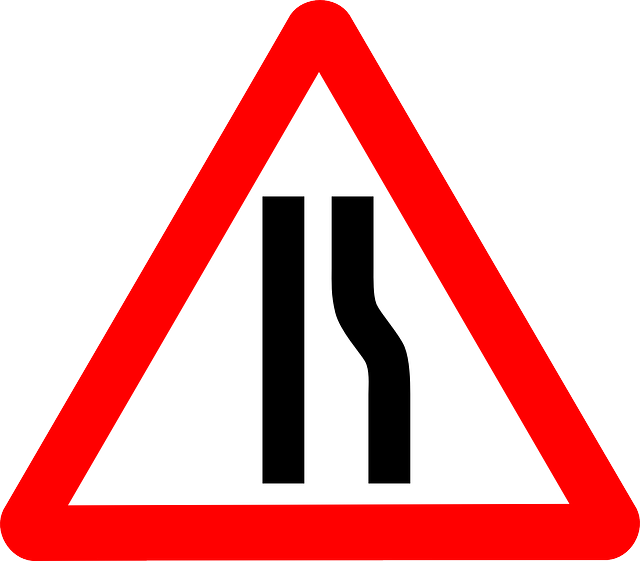نظام تحديد المواقع العالمي
| بلد المنشأ | الولايات المتحدة |
|---|---|
| المشغل | AFSPC |
| النوع | Military, civilian |
| الوضع | Operational |
| التغطية | Global |
| الدقة | 5 meters |
| حجم الكوكبة | |
| إجمالي السواتل | 32 |
| السواتل في المدار | 31 |
| أول إطلاق | فبراير 1978 |
| إجمالي الإطلاقات | 72 |
| السمات المدارية | |
| النظام | 6x مستويات MEO |
| الارتفاع المداري | 20,180 كم (12,540 ميل) |
| جيوديسيا | ||||||||||||||||||||||
|---|---|---|---|---|---|---|---|---|---|---|---|---|---|---|---|---|---|---|---|---|---|---|
| أساسيات | ||||||||||||||||||||||
|
||||||||||||||||||||||
| مفاهيم | ||||||||||||||||||||||
|
||||||||||||||||||||||
| تقنيات | ||||||||||||||||||||||
|
||||||||||||||||||||||
|
معايير
| ||||||||||||||||||||||
نظام تحديد المواقع العالمي أونظام التمسقط العالمي Global Positioning System (ن ت ع أوGPS) هو (GNSS) الوحيد الذي تعمل كافة وظائفه. ويستخدم كوكبة من ما لا يقل عن 24 [ساتل] ذوي مدار أرضي متوسط ينقلون اشارات ميكروويڤ دقيقة, النظام يمكـّن مستقبل ن ت ع GPS من تحديد مسقطه, سرعته, اتجاهه, والوقت. الأنظمة المشابهة هي النظام الروسي گلوناس GLONASS (المتسقط عودته للعمل في 2009), ونظام گاليليوللتمسقط Galileo positioning system الاوروبي المزمع , الصيني المقترح, ونظام السواتل الملاحية الإقليمي الهندي IRNSS.
وقد أنشأت وزارة الدفاع الأمريكية نظام GPS تحت المسمى الرسمي NAVSTAR GPS (وعلى العكس من المعتقد الشائع, فإن الاسم NAVSTAR ليس acronym, بل ببساطة هواسم أطلقه السيد/ جون والش, أحد صناع القرار المهمين حين أتى وقت تخصيص ميزانية للبرنامج). كوكبة السواتل تديرها القوات الجوية الأمريكية 50th Space Wing. ثمن صيانة النظام هوحوالي US$750 مليون دولار في السنة, بما فيه استبدال السواتل الهرمة, والأبحاث والتطوير.
بعد إسقاط رحلة الخطوط الجوية الكورية رقم 007 عام 1983, أصدر الرئيس رونالد ريگان أمراً بإتاحة النظام مجاناً للإستعمالات المدنية كcommon good. منذ ذلك الحين, ن ت ع GPS أصبحت مستعملة على نطاق واسع كمساعد للملاحة في جميع أناتى العالم, وكأداة مفيدة لعمل الخرائط, ولمساحة الأراضي, والتجارة, والاستخدامات الفهمية. ن ت ع GPS تعطي مرجعاً زمنياً دقيقاً يـُستعمل في تطبيقات عديدة منها الدراسة الفهمية للزلازل, وتزامن شبكات الاتصالات.
طريقة مبسطة للتشغيل
|
تصور فني لساتل نظام تحديد المواقع العالمي في مداره
|
|
مستقبل GPS مدني في استعمال بحري.
|
وصف تقني
تقسيم النظام
ن ت ع الحالي يتكون من ثلاثة أقسام. هذه الأقسام هي: قسم الفضاء (SS) وقسم التحكم (CS) وقسم المستعمل (US).
قسم الفضاء
قسم الفضاء (SS) يضم سواتل ن ت ع المدارية، أومركبات الفضاء (SV) في مصطلحات ن ت ع.. تصميم ن ت ع في الأصل كان يتضمن 24 مركبة فضاء، ثمانية جميع منهم في ثلاثة مستويات مدارية دائرية, إلا حتى هذا تم تعديله إلى ستة مستويات بأربعة سواتل في جميع منها. المستويات المدارية تتمركز على الأرض، ولا تلف بالنسبة للنجوم البعيدة. المستويات الستة لها ميل inclination (ميل بالنسبة إلى خط استواء الأرض) قدره تقريباً 55° ويفصلهم عن بعضهم البعض right ascension لعقدة الصعود (الزاوية على خط الإستواء من نقطة مرجعية إلى تقاطع المدار) قدرها 60°. المدارات مصفوفة بحيث على الأقل ستة سواتلقد يكونوا دائماً على خط رؤية line of sight من تقريباً جميع مكان على وجه الأرض.
وبدورانها على ازدياد نحو20,200 كيلومتر (12,600 ميل أو10,900 ميل بحري; بنصف قطر مداري قدره 26,600 كم (16,500 ميل أو14,400 م.ب.)), فإن جميع مركبة فضائية SV تقوم بدورتين كاملتين جميع sidereal day. ولذلك فالإقتفاء الأرضي ground track لكل ساتل يتكرر جميع يوم (sidereal). وقد كان ذلك مفيداً جداً أثناء التطوير, لأنه حتى بأربعة سواتل, فالتنسيق السليم يعني حتى السواتل الأربعة جميعاً يجب حتىقد يكونوا مرئيين من نقطة واحدة لبضعة ساعات جميع يوم. وللعمليات العسكرية, فتكرار الأثر الأرضي يمكن استعماله لضمان جودة التغطية في مناطق القتال.
وحتى سبتمبر 2007, كان هناك 31 ساتلاً فعالين في البث في كوكبة ن ت ع. السواتل الإضافية تـُحسـِّن دقة حسابات مستقبل ن ت ع بإعطائها قياسات redundant. وبزيادة عدد السواتل, فقد تغيرت الكوكبة إلى نسق غير منتظم. وقد زاد هذا النسق من امكانية الإعتماد على النظام وتواجد خدماته, مقارنة بنظام منتظم, يفشل الكثير من السواتل فيه.
قسم التحكم
مسارات طيران السواتل تتعقبها محطات المراقبة التابعة للقوات الجوية الأمريكية في هاواي, كواجالين, جزيرة أسنسيون, دييجوجارسيا, وكولورادوسبرنجز, كولورادو, بالإضافة لمحطات المراقبة التي تديرها وكالة الإستخبارات الأرضية الفضائية الوطنية National Geospatial-Intelligence Agency (NGA). بيانات التقفي يتم إرسالها إلى محطة التحكم الرئيسية التابعة ل قيادة الفضاء بالقوات الجويةفي قاعدة شرايفر الجوية في كولورادوسبرنجز, والتي يشغـّلها السرب الثاني من عمليات الفضاء (2 SOPS) من القوات الجوية الأمريكية. وبعد ذلك يقوم السرب بالإتصال بكل ساتل بانتظام بتعديل ملاحي (مستخدماً الهوائيات الأرضية في جزيرة أسنسيون ودييجوجارسيا وكواجالين وكولورادوسبرنجز). هذه التعديلات تـُزامن الساعات الذريةعلى متن السواتل بدقة بضع نانوثوان من بعضهم البعض , وتضبط ephemeris نموذج الدوران الداخلي لكل ساتل. التعديلات يخلقها فيلتر كالمان الذي يستعمل مدخلات من محطات المتابعة الأرضية, بيانات الطقس الفضائي والكثير من المدخلات الأخرى.
مناورات السواتل ليست دقيقة لوقيست بمواصفات ن ت ع. ولذلك لتغيير مدار ساتل، فيجب وصمه بأنه "غير سليم"، حتى لا تستعمله المستقبلات حول العالم في حساباتها. فقط بعد ذلك يمكن إجراء المناورة، والمدار الناتج يمكن إقتفاؤه من الأرض. بعد ذلك يمكن تحميل ephemeris الجديد ثم يوصم الساتل بأن أصبح "سليماً" مرة أخرى.
قسم المستخدم
مستقبل ن ت ع للمستخدم هوقسم المستخدم (US) من ن ت ع. وبصفة عامة, تتكون مستقبلات ن ت ع من هوائي، مضبوط على الترددات المبثوثة من السواتل، مستقبل-معالج، وساعة عالية الإتزان (غالباً ما تكون crystal oscillator). وقد يتضمنوا أيضاً شاشة عرض لإعطاء بيانات المسقط والسرعة للمستخدم. وغالباً ما يوصف المستقبل بعدد قنواته: إذ يبين ذلك عدد السواتل التي يستطيع متابعتها آنياً. وفي الأصل كانت المستقبلات محدودة بأربع أوخمس قنوات، إلا حتى العدد تزايد على مر السنين، وفي عام 2007, المستقبلات عادة ما تضم ما بين 12 و20 قناة.
مستقبلات ن ت ع قد تتضمن مـُدخلاً للتسليمات التفاضلية، باستخدام RTCMبنسق SC-104. وهذا عادة ماقد يكون بشكل مقبس Port RS-232 بسرعة 4,800 بت/ث. ويتم إرسال البيانات في الواقع بسرعة أقل كثيراً من ذلك, مما يحد من جقة الإشارة المرسلة باستخدام RTCM. المستقبلات المحتوية على ن ت ع تفاضلية DGPS داخلية تتفوق أداءً على على المستقبلات التي تستخدم بيانات RTCM خارجية. وحتى عام 2006, فحتى الوحدات منخفضة الثمن تتضمن عادة مستقبلات Wide Area Augmentation System (WAAS).
وبإمكان الكثير من مستقبلات ن ت ع نقل بيانات المسقط إلى حاسب شخصي أوجهاز آخر ياستخدام بروتوكول NMEA 0183. ويجدر في هذا السياق الإشارة إلى NMEA 2000 الذي هوبروتوكول أحدث إلا أنه أقل استخداماً. كلا البروتوكولين خاصان proprietary ويتحكم فيهما منظمة الإلكترونيات البحرية الأمريكية National Marine Electronics Association المتواجدة في أمريكا . الإتصالات التي المتبادلة مع بروتوكولات NMEA تم جمعها من السجلات العامة المشاع، مما أعطى الفرصة لبناء أدوات مصادر مفتوحة مثل gpsd لقراءة البروتوكول بدون مخالفة قوانين الملكية الفكرية. ويوجد بروتوكولات خاصة أخرى، مثل SiRF وMTK. ويمكن للمستقبلات حتى يتواصلوا مع الأجهزة الأخرى باستعمال طرق تتضمن الوصلة التتابعية serial connection, USB أوبلوتوث.
اشارات الملاحة
ويب جميع ساتل ن ت ع بصفة مستمرة رسالة ملاحة Navigation Message بسرعة 50 بت،ث معطياً بيانات الوقت في اليوم، رقم الأسبوع حسب ن ت ع وصحة الساتل (وتـُرسل جميعاً في الجزء الأول من الرسالة), an ephemeris (وينقل في الجزء الثاني من الرسالة) وalmanac (الجزء الأخير من الرسالة). وتـُرسل الرسائل في هياكل frames, يستغرق جميع منها 30 ثانية لنقل 1500 بت.
أول ست ثوان من جميع هيكل تحتوي على بيانات تصف ساعة الساتل وعلاقتها بوقت ن ت ع. الإثتا عشر ثانية التالية تحتوي على بيانات ephemeris, التي تشي بالمدار الدقيق للساتل. ويتم تحديث ephemeris جميع ساعتين وهي صالحة للإستعمال لمدة أربعة ساعات, وفيها إمكانية التحديث جميعستة ساعات أوأكثر في الظروف غير المعتادة. الوقت المطلوب للحصول على ephemeris بات عنصراً هاماً في التأخير في أول إصلاح للمسقط first position fix, والسبب في ذلك , بإزدياد قدرة العتاد hardware, فإن الوقت المستغرق للتعشيق في lock onto اشارات ساتل تضاءل, إلا حتى بيانات ephemeris تتطلب 30 ثانية (في أسوأ الحالات) قبل حتى تصل, بسبب انخفاض معدل نقل البيانات.
The almanac consists of coarse orbit and status information for each satellite in the constellation, an ionospheric model, and information to relate GPS derived time to Coordinated Universal Time (UTC). A new part of the almanac is received for the last 12 seconds in each 30 second frame. Each frame contains 1/25th of the almanac, so 12.5 minutes are required to receive the entire almanac from a single satellite. The almanac serves several purposes. The first is to assist in the acquisition of satellites at power-up by allowing the receiver to generate a list of visible satellites based on stored position and time, while an ephemeris from each satellite is needed to compute position fixes using that satellite. In older hardware, lack of an almanac in a new receiver would cause long delays before providing a valid position, because the search for each satellite was a slow process. Advances in hardware have made the acquisition process much faster, so not having an almanac is no longer an issue. The second purpose is for relating time derived from the GPS (called GPS time) to the international time standard of UTC. Finally, the almanac allows a single frequency receiver to correct for ionospheric error by using a global ionospheric model. The corrections are not as accurate as augmentation systems like WAAS or dual frequency receivers. However it is often better than no correction since ionospheric error is the largest error source for a single frequency GPS receiver. An important thing to note about navigation data is that each satellite transmits only its own ephemeris, but transmits an almanac for all satellites.
Each satellite transmits its navigation message with at least two distinct spread spectrum codes: the Coarse / Acquisition (C/A) code, which is freely available to the public, and the Precise (P) code, which is usually encrypted and reserved for military applications. The C/A code is a 1,023 chip pseudo-random (PRN) code at 1.023 million chips/sec so that it repeats every millisecond. Each satellite has its own C/A code so that it can be uniquely identified and received separately from the other satellites transmitting on the same frequency. The P-code is a 10.23 megachip/sec PRN code that repeats only every week. When the "anti-spoofing" mode is on, as it is in normal operation, the P code is encrypted by the Y-code to produce the P(Y) code, which can only be decrypted by units with a valid decryption key. Both the C/A and P(Y) codes impart the precise time-of-day to the user.
الترددات المتعملة في ن ت ع تتضمن:
- L1 (1575.42 MHz): Mix of Navigation Message, coarse-acquisition (C/A) code and encrypted precision P(Y) code, plus the new L1C on future Block III satellites.
- L2 (1227.60 MHz): P(Y) code, plus the new L2C code on the Block IIR-M and newer satellites.
- L3 (1381.05 MHz): Used by the Nuclear Detonation (NUDET) Detection System Payload (NDS) to signal detection of nuclear detonations and other high-energy infrared events. Used to enforce nuclear test ban treaties.
- L4 (1379.913 MHz): Being studied for additional ionospheric correction.
- L5 (1176.45 MHz): Proposed for use as a civilian safety-of-life (SoL) signal (see GPS modernization). This frequency falls into an internationally protected range for aeronautical navigation, promising little or no interference under all circumstances. The first Block IIF satellite that would provide this signal is set to be launched in 2009.
حساب المواقع
باستعمال C/A code
To start off, the receiver picks which C/A codes to listen for by PRN number, based on the almanac information it has previously acquired. As it detects each satellite's signal, it identifies it by its distinct C/A code pattern, then measures the received time for each satellite. To do this, the receiver produces an identical C/A sequence using the same seed number, referenced to its local clock, starting at the same time the satellite sent it. It then computes the offset to the local clock that generates the maximum correlation. This offset is the time delay from the satellite to the receiver, as told by the receiver's clock. Since the PRN repeats every millisecond, this offset is precise but ambiguous, and the ambiguity is resolved by looking at the data bits, which are sent at 50 Hz (20 ms) and aligned with the PRN code.
This data is used to solve for x,y,z and t. Many mathematical techniques can be used. The following description shows a straightforward iterative way, but receivers use more sophisticated methods. (see below)
Conceptually, the receiver calculates the distance to the satellite, called the pseudorange.
Next, the orbital position data, or ephemeris, from the Navigation Message is then downloaded to calculate the satellite's precise position. A more-sensitive receiver will potentially acquire the ephemeris data more quickly than a less-sensitive receiver, especially in a noisy environment. Knowing the position and the distance of a satellite indicates that the receiver is located somewhere on the surface of an imaginary sphere centered on that satellite and whose radius is the distance to it. Receivers can substitute altitude for one satellite, which the GPS receiver translates to a pseudorange measured from the center of the Earth.
When pseudoranges have been determined for four satellites, a guess of the receiver's location is calculated. Dividing the speed of light by the distance adjustment required to make the pseudoranges come as close as possible to intersecting results in a guess of the difference between UTC and the time indicated by the receiver's on-board clock. With each combination of four satellites, a geometric dilution of precision (GDOP) vector is calculated, based on the relative sky positions of the satellites used. As more satellites are picked up, pseudoranges from more combinations of four satellites can be processed to add more guesses to the location and clock offset. The receiver then determines which combinations to use and how to calculate the estimated position by determining the weighted average of these positions and clock offsets. After the final location and time are calculated, the location is expressed in a specific coordinate system, e.g. latitude/longitude, using the WGS 84 geodetic datum or a local system specific to a country.
There are many other alternatives and improvements to this process. If at least four satellites are visible, for example, the receiver can eliminate time from the equations by computing only time differences, then solving for position as the intersection of hyperboloids. Also, with a full constellation and modern receivers, more than four satellites can be seen and received at once. Then all satellite data can be weighted by GDOP, signal to noise, path length through the ionosphere, and other accuracy concerns, and then used in a least squares fit to find a solution. In this case the residuals also give an estimate of the errors. Finally, results from other positioning systems such as GLONASS or the upcoming Galileo can be used in the fit, or used to double-check the result. (By design, these systems use the same bands, so much of the receiver circuitry can be shared, though the decoding is different).
باستعمال P(Y) code
حساب مسقط باستخدام إشارة P(Y) هوعموماً مماثل في المفهوم , بافتراض امكان فك تشفيرها. التشفير هوفي الأساس آلية للأمان: فإذا أمكن بنجاج فك تشفير إشارة, فيمكن الإفتراض بمعقولية أنها إشارة حقيقية مـُرسلة من ساتل ن ت ع..[بحاجة لمصدر] ويكن مقارنة ذلك بالمستقبلات المدنية التي هي عرضة بدرجة عالية للاختطاف والخداع spoofing بسبب حتى إشارات C/A سليمة النسق يمكن انتاجها باستعمال مولدات إشارات signal generators متوافرة في الأسواق. سمات RAIM لا تقي من ذلك الإختطاف, لأن RAIM تفحص فقط الإشارات من منظور ملاحي فقط.
الدقة ومصادر الخطأ
| المصدر | التأثير |
|---|---|
| Ionospheric effects | ±خمسة متر |
| Ephemeris errors | ± 2.5 متر |
| Satellite clock errors | ± 2 متر |
| Multipath distortion | ± 1 متر |
| Tropospheric effects | ± 0.5 متر |
| أخطاء رقمية | ± 1 متر |
The position calculated by a GPS receiver requires the current time, the position of the satellite and the measured delay of the received signal. The position accuracy is primarily dependent on the satellite position and signal delay.
To measure the delay, the receiver compares the bit sequence received from the satellite with an internally generated version. By comparing the rising and trailing edges of the bit transitions, modern electronics can measure signal offset to within about 1% of a bit time, or approximatelyعشرة nanoseconds for the C/A code. Since GPS signals propagate at the speed of light, this represents an error of about ثلاثة meters.
Position accuracy can be improved by using the higher-chiprate P(Y) signal. Assuming the same 1% bit time accuracy, the high frequency P(Y) signal results in an accuracy of about 30 centimeters.
Electronics errors are one of several accuracy-degrading effects outlined in the table below. When taken together, autonomous civilian GPS horizontal position fixes are typically accurate to about 15 meters (50 ft). These effects also reduce the more precise P(Y) code's accuracy.
تأثيرات الغلاف الجوي
Inconsistencies of atmospheric conditions affect the speed of the GPS signals as they pass through the Earth's atmosphere, especially the ionosphere. Correcting these errors is a significant challenge to improving GPS position accuracy. These effects are smallest when the satellite is directly overhead and become greater for satellites nearer the horizon since the path through the atmosphere is longer (see airmass). Once the receiver's approximate location is known, a mathematical model can be used to estimate and compensate for these errors.
Because ionospheric delay affects the speed of microwave signals differently depending on their frequency — a characteristic known as dispersion - delays measured on two more frequency bands can be used to measure dispersion, and this measurement can then be used to estimate the delay at each frequency. Some military and expensive survey-grade civilian receivers measure the different delays in the L1 and L2 frequencies to measure atmospheric dispersion, and apply a more precise correction. This can be done in civilian receivers without decrypting the P(Y) signal carried on L2, by tracking the carrier wave instead of the modulated code. To facilitate this on lower cost receivers, a new civilian code signal on L2, called L2C, was added to the Block IIR-M satellites, which was first launched in 2005. It allows a direct comparison of the L1 and L2 signals using the coded signal instead of the carrier wave.
The effects of the ionosphere generally change slowly, and can be averaged over time. The effects for any particular geographical area can be easily calculated by comparing the GPS-measured position to a known surveyed location. This correction is also valid for other receivers in the same general location. Several systems send this information over radio or other links to allow L1-only receivers to make ionospheric corrections. The ionospheric data are transmitted via satellite in Satellite Based Augmentation Systems such as WAAS, which transmits it on the GPS frequency using a special pseudo-random noise sequence (PRN), so only one receiver and antenna are required.
Humidity also causes a variable delay, resulting in errors similar to ionospheric delay, but occurring in the troposphere. This effect both is more localized and changes more quickly than ionospheric effects, and is not frequency dependent. These traits make precise measurement and compensation of humidity errors more difficult than ionospheric effects.
Changes in receiver altitude also change the amount of delay, due to the signal passing through less of the atmosphere at higher elevations. Since the GPS receiver computes its approximate altitude, this error is relatively simple to correct, either by applying a function regression or correlating margin of atmospheric error to ambient pressure using a barometric altimeter.
تأثيرات تعدد المسارات
GPS signals can also be affected by multipath issues, where the radio signals reflect off surrounding terrain; buildings, canyon walls, hard ground, etc. These delayed signals can cause inaccuracy. A variety of techniques, most notably narrow correlator spacing, have been developed to mitigate multipath errors. For long delay multipath, the receiver itself can recognize the wayward signal and discard it. To address shorter delay multipath from the signal reflecting off the ground, specialized antennas (e.g. a choke ring antenna) may be used to reduce the signal power as received by the antenna. Short delay reflections are harder to filter out because they interfere with the true signal, causing effects almost indistinguishable from routine fluctuations in atmospheric delay.
Multipath effects are much less severe in moving vehicles. When the GPS antenna is moving, the false solutions using reflected signals quickly fail to converge and only the direct signals result in stable solutions.
Ephemeris وأخطاء الساعة
While the ephemeris data is transmitted every 30 seconds, the information itself may be up to two hours old. Data up to four hours old is considered valid for calculating positions, but may not indicate the satellites actual position. If a fast TTFF is needed, it is possible to upload valid ephemeris to a receiver, and in addition to setting the time, a position fix can be obtained in under ten seconds. It is feasible to put such ephemeris data on the web so it can be loaded into mobile GPS devices.
The satellite's atomic clocks experience noise and clock drift errors. The navigation message contains corrections for these errors and estimates of the accuracy of the atomic clock, however they are based on observations and may not indicate the clock's current state.
These problems tend to be very small, but may add up to a few meters (10s of feet) of inaccuracy.
التواجد الإنتقائي
GPS includes a (currently disabled) feature called Selective Availability (SA) that can introduce intentional, slowly changing random errors of up to a hundred meters (328 ft) into the publicly available navigation signals to confound, for example, the guidance of long range missiles to precise targets. When enabled, the accuracy is still available in the signal, but in an encrypted form that is only available to the United States military, its allies and a few others, mostly government users. Even those who have managed to acquire military GPS receivers would still need to obtain the daily key, whose dissemination is tightly controlled.
Prior to being turned off, SA typically added signal errors of up to aboutعشرة meters (32 ft) horizontally and 30 meters (98 ft) vertically. The inaccuracy of the civilian signal was deliberately encoded so as not to change very quickly. For instance, the entire eastern U.S. area might read 30 m off, but 30 m off everywhere and in the same direction. To improve the usefulness of GPS for civilian navigation, Differential GPS was used by many civilian GPS receivers to greatly improve accuracy.
During the Gulf War, the shortage of military GPS units and the ready availability of civilian ones caused many troops to buy their own civilian GPS units: their wide use among personnel resulted in a decision to disable Selective Availability. This was ironic, as SA had been introduced specifically for these situations, allowing friendly troops to use the signal for accurate navigation, while at the same time denying it to the enemy—but the assumption underlying this policy was that all U.S. troops and enemy troops would have military-specification GPS receivers and that civilian receivers would not exist in war zones. But since many American soldiers were using civilian devices, SA was also denying the same accuracy to thousands of friendly troops; turning it off (by removing the added-in error) presented a clear benefit to friendly troops.
In the 1990s, the FAA started pressuring the military to turn off SA permanently. This would save the FAA millions of dollars every year in maintenance of their own radio navigation systems. The amount of error added was "set to zero" at midnight on May 12000 following an announcement by U.S. President Bill Clinton, allowing users access to the error-free L1 signal. Per the directive, the induced error of SA was changed to add no error to the public signals (C/A code). Clinton's executive order required SA to be set to zero by 2006; it happened in 2000 once the US military developed a new system that provides the ability to deny GPS (and other navigation services) to hostile forces in a specific area of crisis without affecting the rest of the world or its own military systems.
Selective Availability is still a system capability of GPS, and error could, in theory, be reintroduced at any time. In practice, in view of the hazards and costs this would induce for US and foreign shipping, it is unlikely to be reintroduced, and various government agencies, including the FAA, have stated that it is not intended to be reintroduced.
One interesting side effect of the Selective Availability hardware is the capability to correct the frequency of the GPS cesium and rubidium atomic clocks to an accuracy of approximately 2 × 10-13 (one in five trillion). This represented a significant improvement over the raw accuracy of the clocks.[بحاجة لمصدر]
On 19 September 2007, the United States Department of Defense announced that future GPS III satellites will not be capable of implementing SA, eventually making the policy permanent.
النسبية
وحسب النظرية النسبية, due to their constant movement and height relative to the Earth-centered inertial reference frame, the clocks on the satellites are affected by their speed (special relativity) as well as their gravitational potential (general relativity). For the GPS satellites, general relativity predicts that the atomic clocks at GPS orbital altitudes will tick more rapidly, by about 45.9 microseconds (μs) per day, because they are in a weaker gravitational field than atomic clocks on Earth's surface. Special relativity predicts that atomic clocks moving at GPS orbital speeds will tick more slowly than stationary ground clocks by about 7.2 μs per day. When combined, the discrepancy is about 38 microseconds per day; a difference of 4.465 parts in 1010.. To account for this, the frequency standard onboard each satellite is given a rate offset prior to launch, making it run slightly slower than the desired frequency on Earth; specifically, at 10.22999999543 MHz instead of 10.23 MHz. Since the atomic clocks on board the GPS satellites are precisely tuned, it makes the system a practical engineering application of the scientific theory of relativity in a real-world environment.
Sagnac distortion
GPS observation processing must also compensate for the Sagnac effect. The GPS time scale is defined in an inertial system but observations are processed in an Earth-centered, Earth-fixed (co-rotating) system, a system in which simultaneity is not uniquely defined. A Lorentz transformation is thus applied to convert from the inertial system to the ECEF system. The resulting signal run time correction has opposite algebraic signs for satellites in the Eastern and Western celestial hemispheres. Ignoring this effect will produce an east-west error on the order of hundreds of nanoseconds, or tens of meters in position.
التدخل والتشويش على ن ت ع
المصادر الطبيعية
Since GPS signals at terrestrial receivers tend to be relatively weak, it is easy for other sources of electromagnetic radiation to desensitize the receiver, making acquiring and tracking the satellite signals difficult or impossible.
Solar flares are one such naturally occurring emission with the potential to degrade GPS reception, and their impact can affect reception over the half of the Earth facing the sun. GPS signals can also be interfered with by naturally occurring geomagnetic storms, predominantly found near the poles of the Earth's magnetic field. GPS signals are also subjected to interference from Van Allen Belt radiation when the satellites pass through the South Atlantic Anomaly.
المصادر الاصطناعية
Metallic features in windshields, such as defrosters, or car window tinting films can act as a Faraday cage, degrading reception just inside the car.
Man-made EMI can also disrupt, or jam, GPS signals. In one well documented case, an entire harbor was unable to receive GPS signals due to unintentional jamming caused by a malfunctioning TV antenna preamplifier. Intentional jamming is also possible. Generally, stronger signals can interfere with GPS receivers when they are within radio range, or line of sight. In 2002, a detailed description of how to build a short range GPS L1 C/A jammer was published in the online magazine Phrack.
The U.S. government believes that such jammers were used occasionally during the 2001 war in Afghanistan and the U.S. military claimed to destroy a GPS jammer with a GPS-guided bomb during the Iraq War. Such a jammer is relatively easy to detect and locate, making it an attractive target for anti-radiation missiles. The UK Ministry of Defence tested a jamming system in the UK's West Country onسبعة andثمانية June 2007.
Some countries allow the use of GPS repeaters to allow for the reception of GPS signals indoors and in obscured locations, however, under EU and UK laws, the use of these is prohibited as the signals can cause interference to other GPS receivers that may receive data from both GPS satellites and the repeater.
Due to the potential for both natural and man-made noise, numerous techniques continue to be developed to deal with the interference. The first is to not rely on GPS as a sole source. According to John Ruley, "IFR pilots should have a fallback plan in case of a GPS malfunction".Receiver Autonomous Integrity Monitoring (RAIM) is a feature now included in some receivers, which is designed to provide a warning to the user if jamming or another problem is detected. The U.S. military has also deployed their Selective Availability / Anti-Spoofing Module (SAASM) in the Defense Advanced GPS Receiver (DAGR). In demonstration videos, the DAGR is able to detect jamming and maintain its lock on the encrypted GPS signals during interference which causes civilian receivers to lose lock.
تقنيات لتحسين الدقة
الإضافة
Augmentation methods of improving accuracy rely on external information being integrated into the calculation process. There are many such systems in place and they are generally named or described based on how the GPS sensor receives the information. Some systems transmit additional information about sources of error (such as clock drift, ephemeris, or ionospheric delay), others provide direct measurements of how much the signal was off in the past, while a third group provide additional navigational or vehicle information to be integrated in the calculation process.
Examples of augmentation systems include the Wide Area Augmentation System, Differential GPS, Inertial Navigation Systems and Assisted GPS.
المراقبة الدقيقة
دقة الحسابات يمكن تحسينها من خلال المراقبة والقياس الدقيقين لإشارات ن ت ع المتواجدة وذلك بطرق اضافية أوبديلة.
After SA, which has been turned off, the largest error in GPS is usually the unpredictable delay through the ionosphere. The spacecraft broadcast ionospheric model parameters, but errors remain. This is one reason the GPS spacecraft transmit on at least two frequencies, L1 and L2. Ionospheric delay is a well-defined function of frequency and the total electron content (TEC) along the path, so measuring the arrival time difference between the frequencies determines TEC and thus the precise ionospheric delay at each frequency.
Receivers with decryption keys can decode the P(Y)-code transmitted on both L1 and L2. However, these keys are reserved for the military and "authorized" agencies and are not available to the public. Without keys, it is still possible to use a codeless technique to compare the P(Y) codes on L1 and L2 to gain much of the same error information. However, this technique is slow, so it is currently limited to specialized surveying equipment. In the future, additional civilian codes are expected to be transmitted on the L2 and L5 frequencies (see GPS modernization, below). Then all users will be able to perform dual-frequency measurements and directly compute ionospheric delay errors.
A second form of precise monitoring is called Carrier-Phase Enhancement (CPGPS). The error, which this corrects, arises because the pulse transition of the PRN is not instantaneous, and thus the correlation (satellite-receiver sequence matching) operation is imperfect. The CPGPS approach utilizes the L1 carrier wave, which has a period 1000 times smaller than that of the C/A bit period, to act as an additional clock signal and resolve the uncertainty. The phase difference error in the normal GPS amounts to between 2 and ثلاثة meters (6 toعشرة ft) of ambiguity. CPGPS working to within 1% of perfect transition reduces this error to ثلاثة centimeters (1 inch) of ambiguity. By eliminating this source of error, CPGPS coupled with DGPS normally realizes between 20 and 30 centimeters (8 to 12 inches) of absolute accuracy.
Relative Kinematic Positioning (RKP) is another approach for a precise GPS-based positioning system. In this approach, determination of range signal can be resolved to a precision of less thanعشرة centimeters (4 in). This is done by resolving the number of cycles in which the signal is transmitted and received by the receiver. This can be accomplished by using a combination of differential GPS (DGPS) correction data, transmitting GPS signal phase information and ambiguity resolution techniques via statistical tests—possibly with processing in real-time (real-time kinematic positioning, RTK).
وقت وتاريخ ن ت ع
While most clocks are synchronized to Coordinated Universal Time (UTC), the atomic clocks on the satellites are set to GPS time. The difference is that GPS time is not corrected to match the rotation of the Earth, so it does not contain leap seconds or other corrections which are periodically added to UTC. GPS time was set to match Coordinated Universal Time (UTC) in 1980, but has since diverged. The lack of corrections means that GPS time remains at a constant offset (19 seconds) with International Atomic Time (TAI). Periodic corrections are performed on the on-board clocks to correct relativistic effects and keep them synchronized with ground clocks.[بحاجة لمصدر]
The GPS navigation message includes the difference between GPS time and UTC, which as of 2006 is 14 seconds due to the leap second added to UTC December 31st of 2005. Receivers subtract this offset from GPS time to calculate UTC and specific timezone values. New GPS units may not show the correct UTC time until after receiving the UTC offset message. The GPS-UTC offset field can accommodate 255 leap seconds (eight bits) which, at the current rate of change of the Earth's rotation, is sufficient to last until the year 2330.[بحاجة لمصدر]
As opposed to the year, month, and day format of the Gregorian calendar, the GPS date is expressed as a week number and a day-of-week number. The week number is transmitted as a ten-bit field in the C/A and P(Y) navigation messages, and so it becomes zero again every 1,024 weeks (19.6 years). GPS week zero started at 00:00:00 UTC (00:00:19 TAI) on Januaryستة 1980 and the week number became zero again for the first time at 23:59:47 UTC on August 21 1999 (00:00:19 TAI on August 22, 1999). To determine the current Gregorian date, a GPS receiver must be provided with the approximate date (to within 3,584 days) to correctly translate the GPS date signal. To address this concern the modernized GPS navigation messages use a 13-bit field, which only repeats every 8,192 weeks (157 years), and will not return to zero until near the year 2137.[بحاجة لمصدر]
تطوير (عصرنة) نظام GPS
This article is outdated.
|
Having reached the program's requirements for Full Operational Capability (FOC) on July 17, 1995, the GPS completed its original design goals. However, additional advances in technology and new demands on the existing system led to the effort to modernize the GPS. Announcements from the U.S. Vice President and the White House in 1998 initiated these changes, and in 2000 the U.S. Congress authorized the effort, referring to it as GPS III.
The project aims to improve the accuracy and availability for all users and involves new ground stations, new satellites, and four additional navigation signals. New civilian signals are called L2C, L5 and L1C; the new military code is called M-Code. Initial Operational Capability (IOC) of the L2C code is expected in 2008. A goal of 2013 has been established for the entire program, with incentives offered to the contractors if they can complete it by 2011.
الاستعمالات
The Global Positioning System, while originally a military project, is considered a dual-use technology,The Global Positioning System, while originally a military project, is considered a dual-use technology, meaning it has significant applications for both the military and the civilian industry.
العسكرية
التطبيقات ن ت ع العسكرية تغطي الكثير من الأغراض:
- الملاحة: GPS allows soldiers to find objectives in the dark or in unfamiliar territory, and to coordinate the movement of troops and supplies. The GPS-receivers commanders and soldiers use are respectively called the Commanders Digital Assistant and the Soldier Digital Assistant.
- تقفي هدف: Various military weapons systems use GPS to track potential ground and air targets before they are flagged as hostile.[بحاجة لمصدر] These weapon systems pass GPS co-ordinates of targets to precision-guided munitions to allow them to engage the targets accurately. Military aircraft, particularly those used in air-to-ground roles use GPS to find targets (for example, gun camera video from AH-1 Cobras in Iraq show GPS co-ordinates that can be looked up in Google Earth[بحاجة لمصدر]).
- توجيه الصواريخ والمقذوفات: GPS allows accurate targeting of various military weapons including ICBMs, cruise missiles and precision-guided munitions. Artillery projectiles with embedded GPS receivers able to withstand accelerations of 12,000G have been developed for use in 155 mm howitzers.
- البحث والإنقاذ: Downed pilots can be located faster if they have a GPS receiver.
- الاستطلاع وخلق الخرائط: The military use GPS extensively to aid mapping and الإستطلاع.
- سواتل ن ت ع تحمل أيضاً مجموعة من كاشفات التفجيرات النووية تتكون من optical sensor (Y-sensor), an X-ray sensor, a dosimeter, and an Electro-Magnetic Pulse (EMP) sensor (W-sensor) which form a major portion of the United States Nuclear Detonation Detection System.
المدنية
الكثير من التطبيقات المدنية تستفيد من إشارات ن ت ع، باستخدام واحد أوأكثر من المكونات الثلاثة الأساسية لنظام التمسقط العالمي: المسقط المطلق، الحركة النسبية ونقل الوقت time transfer.
The ability to determine the receiver's absolute location allows GPS receivers to perform as a surveying tool or as an aid to navigation. The capacity to determine relative movement enables a receiver to calculate local velocity and orientation, useful in vessels or observations of the Earth. Being able to synchronize clocks to exacting standards enables time transfer, which is critical in large communication and observation systems. An example is CDMA digital cellular. Each base station has a GPS timing receiver to synchronize its spreading codes with other base stations to facilitate inter-cell hand off and support hybrid GPS/CDMA positioning of mobiles for emergency calls and other applications. Finally, GPS enables researchers to explore the Earth environment including the atmosphere, ionosphere and gravity field. GPS survey equipment has revolutionized tectonics by directly measuring the motion of faults in earthquakes.
To help prevent civilian GPS guidance from being used in an enemy's military or improvised weaponry, the US Government controls the export of civilian receivers. A US-based manufacturer cannot generally export a GPS receiver unless the receiver contains limits restricting it from functioning when it is simultaneously (1) at an altitude above 18 kilometers (60,000 ft) and (2) traveling at over 515 m/s (1,000 knots). These parameters are well above the operating characteristics of the typical cruise missile, but would be characteristic of the reentry vehicle from a ballistic missile.
GPS functionality has now started to move into mobile phones en masse. The first GSM handsets with integrated GPS were launched already in the late 1990’s, and were available for broader consumer availability on networks such as those run by Nextel, Sprint and Verizon in 2002 in response to US FCC mandates for handset positioning in emergency calls. Capabilities for access by third party software developers to these features were slower in coming, with Nextel opening those APIs up upon launch to any developer, Sprint following in 2006, and Verizon soon thereafter.
تاريخ
The design of GPS is based partly on the similar ground-based radio navigation systems, such as LORAN and the Decca Navigator developed in the early 1940s, and used during الحرب العالمية الثانية. Additional inspiration for the GPS came when the الاتحاد السوڤيتي launched the first Sputnik in 1957. A team of U.S. scientists led by Dr. Richard B. Kershner were monitoring Sputnik's radio transmissions. They discovered that, because of the Doppler effect, the frequency of the signal being transmitted by Sputnik was higher as the satellite approached, and lower as it continued away from them. They realized that since they knew their exact location on the globe, they could pinpoint where the satellite was along its orbit by measuring the Doppler distortion.
The first satellite navigation system, Transit, used by the United States Navy, was first successfully tested in 1960. Using a constellation of five satellites, it could provide a navigational fix approximately once per hour. In 1967, the U.S. Navy developed the Timation satellite which proved the ability to place accurate clocks in space, a technology the GPS relies upon. In the 1970s, the ground-based Omega Navigation System, based on signal phase comparison, became the first world-wide radio navigation system.
The first experimental Block-I GPS satellite was launched in February 1978. The GPS satellites were initially manufactured by Rockwell International (now part of Boeing) and are now manufactured by Lockheed Martin (IIR/IIR-M) and Boeing (IIF).
خط زمني
- في 1972, the US Air Force Central Inertial Guidance Test Facility (Holloman AFB) conducted developmental flight tests of two prototype GPS receivers over White Sands Missile Range, using ground-based pseudo-satellites.
- In 1978 the first experimental Block-I GPS satellite was launched.
- In 1983, after Soviet interceptor aircraft shot down the civilian airliner KAL 007 in restricted Soviet airspace, killing all 269 people on board, U.S. President Ronald Reagan announced that the GPS would be made available for civilian uses once it was completed.
- By 1985, ten more experimental Block-I satellites had been launched to validate the concept.
- في 14 فبراير, 1989, the first modern Block-II satellite was launched.
- في 1992, the 2nd Space Wing, which originally managed the system, was de-activated and replaced by the 50th Space Wing.
- By December 1993 the GPS achieved initial operational capability
- وبحلول 17 يناير, 1994 أصبح هناك كوكبة كاملة من 24 ساتل في المدار.
- Full Operational Capability was declared by NAVSTAR in April 1995.
- In 1996, recognizing the importance of GPS to civilian users as well as military users, U.S. President Bill Clinton issued a policy directive declaring GPS to be a dual-use system and establishing an Interagency GPS Executive Board to manage it as a national asset.
- In 1998, U.S. Vice President Al Gore announced plans to upgrade GPS with two new civilian signals for enhanced user accuracy and reliability, particularly with respect to aviation safety.
- On May 2, 2000 "Selective Availability" was discontinued as a result of the 1996 executive order, allowing users to receive a non-degraded signal globally.
- In 2004, the United States Government signed a historic agreement with the European Community establishing cooperation related to GPS and Europe's planned Galileo system.
- In 2004, U.S. President George W. Bush updated the national policy, replacing the executive board with the National Space-Based Positioning, Navigation, and Timing Executive Committee.
- November 2004, QUALCOMM announced successful tests of Assisted-GPS for mobile phones.[2]
- In 2005, the first modernized GPS satellite was launched and began transmitting a second civilian signal (L2C) for enhanced user performance.
- On September 14 2007, the aging mainframe-based Ground Segment Control System was transitioned to the new Architecture Evolution Plan. [3]
- The most recent launch was on March 15, 2008. The oldest GPS satellite still in operation was launched on July أربعة 1991, and became operational on August 30 1991.
| Block | فترة الإطلاق | السواتل المطلقة | حالياً في الخدمة |
|---|---|---|---|
| I | 1978-1985 | 10+11 | 0 |
| II | 1985-1990 | 9 | 0 |
| IIA | 1990-1997 | 19 | 13 |
| IIR | 1997-2004 | 12+11 | 12 |
| IIR-M | 2005-2008 | 6+12 | 6 |
| IIF | 2009- | 0 | 0 |
| Total | 58+31,2 | 31 | |
|
1Failed 2In preparation. (Last update: 12 April 2008) | |||
ترسية العطاءات
مطورا ن ت ع حصلا على جائزة تشارلز ستارك دريبر الأكاديمية الوطنية للهندسة لعام 2003:
- Ivan Getting, الرئيس الفخري لThe Aerospace Corporation and engineer at the Massachusetts Institute of Technology, established the basis for GPS, improving on the الحرب العالمية الثانية land-based radio system called LORAN (Long-range Radio Aid to Navigation).
- Bradford Parkinson, professor of aeronautics and astronautics at Stanford University, conceived the present satellite-based system in the early 1960s and developed it in conjunction with the U.S. Air Force.
One GPS developer, Roger L. Easton, received the National Medal of Technology on February 13 2006 at the White House.
في عشرة فبراير, 1993, the National Aeronautic Association selected the Global Positioning System Team as winners of the 1992 Robert J. Collier Trophy, the most prestigious aviation award in the United States. This team consists of researchers from the Naval Research Laboratory, the U.S. Air Force, the Aerospace Corporation, Rockwell International Corporation, and IBM Federal Systems Company. The citation accompanying the presentation of the trophy honors the GPS Team "for the most significant development for safe and efficient navigation and surveillance of air and spacecraft since the introduction of radio navigation 50 years ago."
أنظمة أخرى
هناك أنظمة ساتلية للملاحة غير GPS، وهم في مراحل مختلفة من التطوير ومنهم:
- بـِيـْدو Beidou — نظام إقليمي تطوره الصين وتعمل حالياً على تطويره ليصبح نظاماً عالمياً تسميه كومپاس COMPASS.
- گاليليو Galileo — نظام عالمي مقترح يشهجر في تطويره الاتحاد الاوروبي, مصحوباً بالصين, إسرائيل, الهند, المغرب, السعودية, كوريا الجنوبية واوكرانيا, مـُخطط له حتى يصبح شغالاً بحلول 2011–2012.
- گلوناس GLONASS — النظام العالمي الروسي الذي يعاد تشغيله بالمشاركة مع الهند.
- نظام السواتل الملاحية الإقليمي الهندي (IRNSS) — نظام إقليمي تقترحه الهند.
- QZSS - نظام إقليمي تقترحه اليابان, يضيف تغطية أفضل للجزر اليابانية.
انظر أيضاً
هذه منطقات يجب ترجمتها. ساعدونا بالترجمة.
- RAIM
- SIGI
- radio navigation
- High Sensitivity GPS
- Degree Confluence Project Use GPS to visit integral degrees of latitude and longitude.
- Exif, GPS data transfer.
- Geotagging
- Geocaching
- GPS Drawing Digital mapping and drawing with GPS tracks.
- GPS tracking
- GPS/INS
- Assisted GPS
- GPX (XML schema for interchange of waypoints)
- ID Sniper rifle
- OpenStreetMap, free content maps and street pictures (GFDL)
- Telematics: Many telematics devices use GPS to determine the location of mobile equipment.
- —Chapter 11 "Satellite Navigation"
- Point of Interest
- Automotive navigation system
- NextGen
- Height Modernization
- Trilateration
- Skyhook Wireless — Wi-Fi Positioning System
هامش
- ^ Parkinson, B.W. (1996), Global Positioning System: Theory and Applications, chap. 1: Introduction and Heritage of NAVSTAR, the Global Positioning System. pp. 3-28, American Institute of Aeronautics and Astronautics, Washington, D.C.
- ^ GPS Overview from the NAVSTAR Joint Program Office. شوهدت في 15 ديسمبر, 2006.
-
^ "History of GPS". usinfo.state.gov. February 3, 2006. External link in
|publisher=(help) - ^ globalsecurity.org [1].
- ^ P. Daly. "Navstar GPS and GLONASS: global satellite navigation systems" (PDF). IEEE.
- ^ Dana, Peter H. GPS Orbital Planes. August 8, 1996.
- ^ What the Global Positioning System Tells Us about Relativity. Accessed 2 يناير, 2007.
- ^ USCG Navcen: GPS Frequently Asked Questions. Accessed ثلاثة يناير, 2007.
- ^ Agnew, D.C. and Larson, K.M. (2007). "Finding the repeat times of the GPS constellation". GPS Solutions. Springer. 11 (1): 71--76. doi:10.1007/s10291-006-0038-4.CS1 maint: multiple names: authors list (link) هذه الموضوعة هي من المسقط الإلكتروني للمؤلف, مع بعض التعديلات الطفيفة.
- ^ Massatt, Paul and Brady, Wayne. "Optimizing performance through constellation management", Crosslink, Summer 2002, pages 17-21.
- ^ المحطات الإضافية هي: واشنطن العاصمة, إنجلترة والأرجنتين والإكوادور والبحرين وأستراليا. المصدر: خفر السواحل الأمريكي General GPS News 9-9-05
- ^ USNO NAVSTAR Global Positioning System. Accessed May 14, 2006.
- ^ لاحظ أنه بالرغم من وجود الكثير من منتجي المستقبلات، إلا أنهم جميعاً تقريباً يستخدمون أحد the chipsets المصنوعة لهذا الغرض. مثال ذلك: "GPS Receiver Chip Performance Survey". GPS Technology Reviews.
- ^ NMEA NMEA 2000
- ^ "Interface Specification IS-GPS-200, Revision D: Navstar GPS Space Segment/Navigation User Interfaces" (PDF). Navstar GPS Joint Program Office. Page 103.
- ^ First GPS IIF Satellite Undergoes Environmental Testing. GPS World. November 5, 2007.
- ^ How Does GPS Work?
- ^ "AN02 Network Assistance" (HTML). Retrieved 2007-09-10.
- ^ The same principle, and the math behind it, can be found in descriptions of pulsar timing by astronomers.
- ^ http://www.tdc.co.uk/index.php?key=ephemeris Ephemeris Server Example
- ^ "UNit 1 - Introduction to GPS".
- ^ "Statement by the President regarding the United States' Decision to Stop Degrading Global Positioning System Accuracy". Office of Science and Technology Policy. May 1, 2000. Retrieved 2007-12-17. Check date values in:
|date=(help) -
^ "GNSS - Frequently Asked Questions - GPS: Will SA ever be turned back on?". FAA. June 13, 2007. Retrieved 2007-12-17. Check date values in:
|date=(help) -
^ "DoD Permanently Discontinues Procurement Of Global Positioning System Selective Availability". DefenseLink. September 18, 2007. Retrieved 2008-02-20. Check date values in:
|date=(help) - ^ "Selective Availability". National space-based Positioning, Navigation, and Timing Executive Committee. Retrieved 2008-02-20.
- ^ Rizos, Chris. University of New South Wales. GPS Satellite Signals. 1999.
- ^ The Global Positioning System by Robert A. Nelson Via Satellite, November 1999
- ^ Ashby, Neil Relativity and GPS. Physics Today, May 2002.
- ^ Space Environment Center. SEC Navigation Systems GPS Page. August 26, 1996.
- ^ "I-PASS Mounting for Vehicles with Special Windshield Features" (PDF).
- ^ "3M Automotive Films".. Note that the 'Color Stable' films are specifically described as not interfering with satellite signals.
- ^ The hunt for an unintentional GPS jammer. GPS World. 1 يناير, 2003.
- ^ Low Cost and Portable GPS Jammer. Phrack issue 0x3c (60), article 13]. Published December 28, 2002.
- ^ American Forces Press Service. Centcom charts progress. March 25, 2003.
- ^ MoD's tests will send satnav haywire so take a road atlas | the Daily Mail
- ^ Ruley, John. AVweb. GPS jamming. February 12, 2003.
- ^ Commercial GPS Receivers: Facts for the Warfighter. Hosted at the Joint Chiefs website, linked by the USAF's GPS Wing DAGR program website. Accessed onعشرة April, 2007
- ^ US Coast Guard news release. Global Positioning System Fully Operational
- ^ Hydrographic Society Journal. Developments in Global Navigation Satellite Systems. Issue #104, April 2002. Accessed April 5, 2007.
- ^ http://peosoldier.army.mil/factsheets/SWAR_LW_DBCS.pdf Commanders Digital Assistant explanation and photo
- ^ Latest version Commanders Digital Assistant
- ^ http://www.army-technology.com/contractors/computers/lago/lago6.html Soldier Digital Assistant explanation and photo
- ^ http://www.gcn.com/print/22_20/22893-1.html Commanders and Soldiers' GPS-receivers
- ^ "XM982 Excalibur Precision Guided Extended Range Artillery Projectile". GlobalSecurity.org. 2007-05-29. Retrieved 2007-09-26.
- ^ Sandia National Laboratory's Nonproliferation programs and arms control technology.
- ^ Dr. Dennis D. McCrady. "The GPS Burst Detector W-Sensor" (PDF). Sandia National Laboratories.
- ^ Arms Control Association.Missile Technology Control Regime. Accessed May 17, 2006.
- ^ United States Department of Defense. Announcement of Initial Operational Capability. December 8, 1993.
- ^ National Archives and Records Administration. U.S. Global Positioning System Policy. March 29, 1996.
- ^ http://sidt.gpsworld.com/gpssidt/System+Design+and+Test+News/IIR-19MSVN48-Successfully-Reaches-Orbit/ArticleStandard/Article/detail/503513?contextCategoryId=1385
- ^ United States Naval Observatory. GPS Constellation Status. Accessed on October 17 2007.
- ^ "United States Naval Observatory ((USNO) - Block II Satellite Information".
- ^ GPS constellation status. Russian Space Agency. Aprilتسعة 2008
- ^ Last IIR-M Satellites Heads to the Cape. GPS World. April 42008
- ^ United States Naval Research Laboratory. National Medal of Technology for GPS. November 21, 2005
وصلات خارجية
وصلات حكومية
- GPS.gov—General public education website created by the U.S. Government
- National Space-Based PNT Executive Committee—Established in 2004 to oversee management of GPS and GPS augmentations at a national level.
- USCG Navigation Center—Status of the GPS constellation, government policy, and links to other references. Also includes satellite almanac data.
- The GPS Joint Program Office (GPS JPO)—Responsible for designing and acquiring the system on behalf of the US Government.
- U.S. Naval Observatory's GPS constellation status
- U.S. Army Corps of Engineers manual: NAVSTAR HTML and PDF (22.6 MB, 328 pages)
- PNT Selective Availability Announcements
- GPS SPS Signal Specification, 2nd Edition—The official Standard Positioning Signal specification.
- Federal Aviation Administration's GPS FAQ
وصلات مقدمة/شرح تعليمي
- How does GPS work? TomTom explains GPS, navigation, and digital maps
- GPS Basics [http://www.u-blox.com/customersupport/tutorial.html / u-blox GPS basics tutorial
- GPS Academy Garmin interactive video web site explaing what exactly GPS is and what it can do for you
- HowStuffWorks' Simplified explanation of GPS and video about how GPS works.
- Trimble's Online GPS Tutorial Tutorial designed to introduce you to the principles behind GPS
- GPS and GLONASS Simulation(Java applet) Simulation and graphical depiction of space vehicle motion including computation of dilution of precision (DOP)
وصلات موضوعات تقنية وتاريخية ومتفرقة
- Dana, Peter H. "Global Positioning System Overview"
- Satellite Navigation: GPS & Galileo (PDF)—16-page paper about the history and working of GPS, touching on the upcoming Galileo
- History of GPS, including information about each satellite's configuration and launch.
- Chadha, Kanwar. "The Global Positioning System: Challenges in Bringing GPS to Mainstream Consumers" Technical Article (1998)
- GPS Weapon Guidance Techniques
- RAND history of the GPS system (PDF)
- GPS-guided educational experience based on the history of a location
- GPS Anti-Jam Protection Techniques
- Crosslink Summer 2002 issue by The Aerospace Corporation on satellite navigation.
- Improved weather predictions from COSMIC GPS satellite signal occultation data.
- David L. Wilson's GPS Accuracy Web Page A thorough analysis of the accuracy of GPS.
- Innovation: Spacecraft Navigator, Autonomous GPS Positioning at High Earth Orbits Example of GPS receiver designed for high altitude spaceflight.
- The Navigator GPS Receiver GSFC's Navigator spaceflight receiver.
- Neil Ashby's Relativity in the Global Positioning System
- Ralph Bucher's Hyperbolic Positioning Algorithm [4]
















